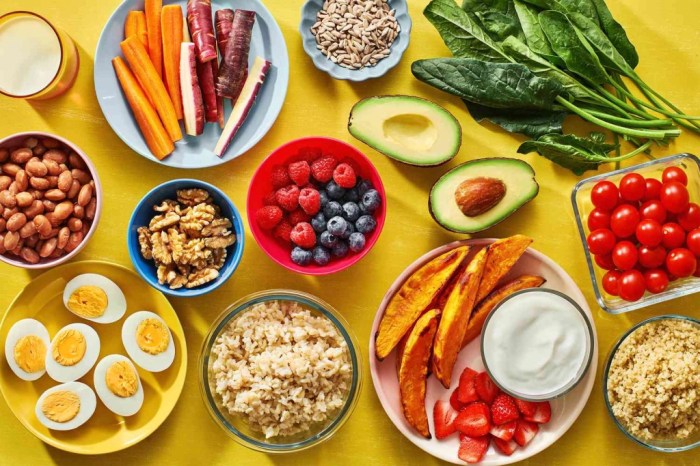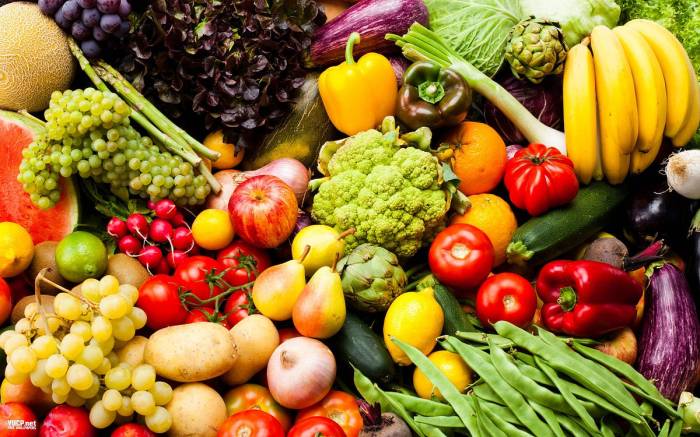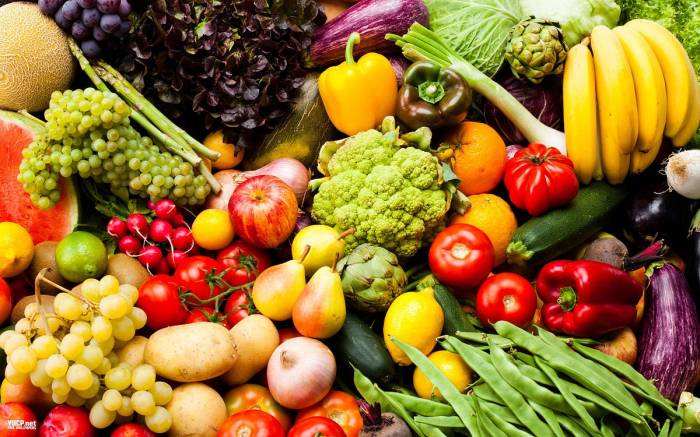The foods travelers want most inflight are a complex mix of preferences, influenced by everything from age and dietary restrictions to cultural background and airline reputation. This post dives deep into the fascinating world of in-flight dining, exploring the desires of various traveler demographics and the factors that impact their food choices. From the picky eater to the adventurous gourmand, we’ll uncover the secrets behind satisfying the diverse palates of air travelers.
We’ll examine the current state of in-flight food, looking at factors like variety, quality, and presentation. We’ll also analyze the trends shaping in-flight menus, from the rise of healthy options to the increasing importance of sustainability. Finally, we’ll discuss potential improvements to make the in-flight dining experience even more enjoyable for everyone.
Food Preferences of Different Traveler Demographics
Catering to diverse palates is crucial for a positive travel experience. Understanding the varied food preferences of different traveler groups is essential for airlines and other travel providers to offer suitable and satisfying options. From dietary restrictions to cultural influences, these preferences shape what travelers seek and expect in their meals.
Age Group Preferences
Different age groups have varying dietary needs and preferences. Children often have specific requests for familiar flavors and textures, while young adults might gravitate toward more adventurous or unique dishes. Middle-aged adults frequently prioritize health and balanced meals, and seniors may have particular sensitivities or limitations. Understanding these needs allows for more personalized and tailored meal options.
- Children: Children often prefer familiar, kid-friendly foods like pasta, pizza, and chicken nuggets. They may also be drawn to brightly colored and appealing presentations. Airlines can cater to this by offering kid-friendly meals that are appealing to children while ensuring they meet nutritional needs. For example, a recent study showed that offering kid-friendly meals that include fruits and vegetables increased the consumption of healthy options by 15% among children.
- Young Adults: Young adults often seek adventurous flavors and new culinary experiences. They may be open to trying international cuisines and unique dishes. Many are also interested in healthier options, such as salads and lighter meals.
- Middle-Aged Adults: Middle-aged adults often prioritize balanced meals and health-conscious choices. They may have specific dietary needs or restrictions, such as low-sodium or low-fat options. They might also be interested in familiar comfort foods, but with healthier adaptations.
- Seniors: Seniors may have specific dietary needs or restrictions due to health conditions. They may need softer textures or meals with reduced sodium or fat content. Some might have allergies or sensitivities to certain ingredients.
Dietary Restrictions and Preferences
A wide range of dietary restrictions and preferences must be accommodated. Vegetarian, vegan, gluten-free, halal, and kosher options are essential for diverse traveler groups. Meeting these needs is critical to ensuring all passengers feel comfortable and well-served.
- Vegetarian: Vegetarian travelers require meals without meat or animal products. These can include dishes made with vegetables, grains, and legumes.
- Vegan: Vegan travelers require meals that are entirely plant-based, excluding all animal products, including dairy and eggs.
- Gluten-Free: Gluten-free travelers need meals that do not contain gluten. This includes avoiding wheat, barley, and rye products. Gluten-free options are becoming more prevalent, especially for travelers with celiac disease or gluten sensitivity.
- Halal: Halal travelers require meals that adhere to Islamic dietary laws. These meals typically avoid pork and certain other ingredients. Ensuring halal options are available is important for Muslim travelers.
- Kosher: Kosher travelers require meals that comply with Jewish dietary laws. This often involves specific combinations of ingredients and preparation methods. Catering to kosher needs is essential for Jewish travelers.
International vs. Domestic Travelers
International travelers often have specific preferences based on their cultural backgrounds. They may crave familiar dishes from their home countries. Domestic travelers may have a broader range of options readily available and familiarity with local cuisines.
- International Travelers: International travelers may seek familiar flavors and dishes from their home countries. This could include specific regional cuisines or dishes that are popular in their home region.
- Domestic Travelers: Domestic travelers often have easier access to familiar cuisines and local favorites. They may be more open to trying new options from their home region.
Cultural Influence on Food Choices
Cultural background plays a significant role in food preferences. Travelers from different cultures may have unique tastes and traditions regarding meals. This can include preferences for specific ingredients, cooking methods, and flavor combinations. Airlines can offer options that reflect these diverse cultural tastes.
Examples of Popular Foods
Popular foods vary greatly depending on the traveler demographic. Examples include Asian noodle dishes for international travelers, comfort foods like hamburgers for domestic travelers, and salads for health-conscious travelers. These options cater to different preferences and expectations.
Table of Common Food Preferences
| Demographic | Common Food Preferences |
|---|---|
| Children | Pasta, pizza, chicken nuggets, familiar flavors, brightly colored food |
| Young Adults | International cuisines, unique dishes, healthier options, adventurous flavors |
| Middle-Aged Adults | Balanced meals, health-conscious choices, familiar comfort foods, lighter meals, low-sodium/low-fat options |
| Seniors | Softer textures, reduced sodium/fat content, meals with specific dietary needs, familiar foods |
| Vegetarians | Vegetable-based dishes, grains, legumes, salads |
| Vegans | Plant-based dishes, excluding all animal products |
| Gluten-Free | Gluten-free alternatives to wheat, barley, and rye products |
| Halal | Meals avoiding pork and specific ingredients as per Islamic dietary laws |
| Kosher | Meals adhering to Jewish dietary laws, specific combinations of ingredients |
| International Travelers | Familiar dishes from their home countries, regional cuisines, specific cultural dishes |
| Domestic Travelers | Local cuisines, familiar favorites, wider range of options readily available |
In-Flight Food Variety and Quality

The culinary experience on a flight is often overlooked, yet it significantly impacts the overall travel experience. A well-executed in-flight meal can elevate the journey, while a subpar one can detract from the entire trip. This section delves into the factors influencing the variety and quality of food served on flights, exploring the intricacies of ingredient sourcing, preparation, and airline reputation.The availability of diverse food options on flights is influenced by a complex interplay of factors.
These include the airline’s budget, the flight’s duration, the destination’s culinary landscape, and the number of passengers onboard. Shorter flights, for instance, might offer simpler, more standardized menus, while longer flights with international destinations often present a greater variety to cater to diverse tastes.
Factors Influencing Food Variety
Airlines carefully consider factors like passenger demographics and dietary restrictions when designing their menus. Understanding the dietary preferences of their target audience, particularly regarding vegetarian, vegan, or halal options, plays a crucial role in ensuring a satisfying experience for a wider range of travelers. The flight’s route and duration also influence the menu. Long-haul flights usually feature more elaborate choices compared to short hops.
Factors Affecting Perceived Food Quality
The perceived quality of in-flight meals extends beyond the taste. Factors like presentation, portion size, and the overall ambiance of the meal service also play a significant role. A meticulously prepared meal presented attractively can make a significant difference in the passenger’s perception. Similarly, a convenient and timely service contributes to the positive experience.
Importance of Fresh Ingredients
Fresh, high-quality ingredients are paramount for a satisfying in-flight meal. Using fresh produce, lean proteins, and flavorful spices can significantly enhance the taste and nutritional value. The challenge lies in maintaining freshness during the flight’s journey, given the limited storage and preparation facilities.
Role of Food Preparation Methods
Proper food preparation methods significantly impact the quality of in-flight meals. Efficient cooking techniques that minimize moisture loss and preserve the integrity of the ingredients are crucial. Airlines often utilize methods that are adaptable to the limited kitchen space on board, balancing taste and efficiency.
Impact of Airline Brand Reputation
The airline’s overall brand reputation and customer service standards often influence passenger expectations for food quality. An airline known for its superior service and attention to detail is likely to be judged more favorably regarding the quality of its in-flight meals.
Comparison of Airline Food Quality and Variety
| Airline | Food Variety | Food Quality |
|---|---|---|
| Airline A | Moderate, caters to basic needs | Fair, but inconsistent |
| Airline B | High, offers diverse options | Excellent, high-quality ingredients |
| Airline C | Low, limited choices | Acceptable, but somewhat bland |
Note: This is a simplified comparison and individual experiences may vary. Factors like specific flight routes and passenger demographics can influence the actual experience.
Trends in In-Flight Food Offerings: The Foods Travelers Want Most Inflight
The evolution of in-flight dining reflects broader societal shifts in food preferences and consumer expectations. Airlines are increasingly recognizing the need to cater to diverse palates and dietary requirements, while simultaneously navigating the complexities of onboard preparation and service. This dynamic landscape necessitates constant adaptation to evolving trends and consumer demands.
Evolution of In-Flight Food Menus Over Time
In the past, in-flight meals were often standardized and limited in variety. Typical offerings included a limited selection of hot meals, often featuring a meat-based main course, a side dish, and a dessert. This approach reflected the constraints of onboard kitchens and the relatively simple nutritional requirements of travelers. However, as travel became more frequent and diverse, the need for more varied options became apparent.
Impact of Current Food Trends on In-Flight Meals
Current food trends are significantly influencing in-flight meal design. The rise of global cuisines and diverse dietary needs has led to a greater emphasis on regional specialties and international flavors. Airlines are incorporating these elements into their menus to provide more appealing and exciting options for passengers. Furthermore, the growing awareness of healthy eating habits is driving the inclusion of fresh ingredients and lighter, more nutritious options.
Growing Demand for Healthy and Nutritious Food Options
Passengers are increasingly seeking healthier and more nutritious options. This demand is reflected in the introduction of fresh salads, lean proteins, and plant-based alternatives. Airlines are recognizing this shift and incorporating more fruits, vegetables, and whole grains into their menus. Furthermore, there’s a growing interest in options catering to specific dietary restrictions, such as gluten-free, vegetarian, and vegan choices.
Ever wonder what snacks air travelers crave most? It’s usually familiar comfort food, and it’s no different when you’re looking for the best lightweight summer clothes for your travels. For instance, a light and breezy wardrobe is essential for those hot summer flights, which brings me to my next point about style shopping, especially when you’re looking for the best lightweight summer clothes for travel.
style shopping best lightweight summer will help you find exactly what you need. Ultimately, though, the most desired foods are often those simple, satisfying options that remind you of home.
Influence of Sustainability Concerns on In-Flight Food Choices
Sustainability concerns are shaping in-flight food choices. Airlines are increasingly focused on reducing their environmental footprint through sustainable sourcing practices. This includes selecting locally sourced ingredients whenever possible and reducing food waste. Efforts are also being made to minimize packaging and utilize eco-friendly materials. For example, some airlines are experimenting with reusable food containers and minimizing single-use plastics.
Examples of Innovative Food Offerings by Airlines
Innovative offerings are a hallmark of modern in-flight dining. Airlines are venturing beyond traditional fare to provide more exciting and diverse experiences. Some examples include offering gourmet meals with unique regional flavors, utilizing locally sourced ingredients to promote regional cuisines, or providing interactive meal experiences that engage passengers. For instance, some airlines offer a selection of gourmet cheeses and artisanal breads to elevate the in-flight dining experience.
Key Trends in In-Flight Food Menus Over the Past Decade
| Trend | Description |
|---|---|
| Increased Variety | Menus now offer a wider selection of cuisines and dietary options. |
| Focus on Health and Nutrition | Emphasis on fresh ingredients, lean proteins, and lighter meals. |
| Sustainability Concerns | Growing focus on locally sourced ingredients, reduced packaging, and waste reduction. |
| Global Cuisines | Integration of regional and international flavors into menus. |
| Dietary Restrictions | More options for gluten-free, vegetarian, vegan, and other specific dietary needs. |
Factors Influencing Traveler Food Choices
The food served on airplanes plays a significant role in the overall travel experience. Beyond just sustenance, in-flight meals contribute to passenger satisfaction and brand perception. Understanding the key factors that influence traveler food choices is crucial for airlines seeking to enhance this aspect of their service. This allows for tailored menus and improved service, creating a more enjoyable and positive experience for their passengers.Traveler food choices are a complex interplay of several factors.
Price, portion size, presentation, meal timing, service quality, and individual preferences all play a part in shaping what passengers select. This multifaceted nature requires a nuanced understanding of passenger needs and desires to effectively cater to their food preferences.
Price Sensitivity
Price significantly influences traveler food choices. Budget-conscious travelers might opt for complimentary snacks or basic meals, while those willing to spend more might choose premium options or meals with specific dietary needs. The perceived value of the food in relation to its cost plays a critical role. For example, a traveler on a tight budget might choose a smaller portion of a basic meal over a larger, more expensive one.
Airlines need to carefully consider the price points of different meal options to cater to the diverse range of budgets and preferences among their passengers.
Impact of Portion Sizes
Portion sizes directly impact traveler satisfaction. Inadequate portions can leave passengers feeling unsatisfied, potentially leading to negative feedback. Conversely, overly large portions can be perceived as wasteful and create discomfort. Finding the right balance is crucial. Airlines must consider the typical appetite of their passengers and the duration of the flight when determining portion sizes.
For example, shorter flights might warrant smaller portions, while longer flights might necessitate larger ones. Airlines must also offer options for smaller or larger portions to cater to individual preferences.
Presentation and Visual Appeal
The presentation and visual appeal of in-flight meals can significantly impact the overall experience. Attractive plating, appealing colors, and thoughtful presentation contribute to a positive perception of the food and the airline. A meal that is aesthetically pleasing is more likely to be enjoyed. Conversely, meals that appear unappetizing can deter passengers from choosing them, even if the food itself is good.
Airlines need to invest in both the quality of the food and its presentation to maximize passenger satisfaction.
Meal Timing
Meal timing significantly affects traveler preferences. The time of day and the duration of the flight influence the desired type of meal. For example, a morning flight might call for a light breakfast, while an evening flight might warrant a more substantial meal. Airlines must be mindful of these factors and adjust their meal offerings accordingly.
Airline Service Quality
Airline service quality plays a vital role in the enjoyment of the food. Friendly and efficient service enhances the dining experience. Prompt delivery of meals, clear explanations of options, and courteous interactions all contribute to overall satisfaction. Poor service can diminish even the most appealing meal, while good service can elevate a simple meal to a memorable experience.
Consider how the speed of meal service can impact the overall dining experience.
Influence of Factors on Traveler Food Choices
| Factor | Description | Impact on Traveler Choices |
|---|---|---|
| Price | Cost of the meal | Influences selection between basic and premium options |
| Portion Size | Amount of food served | Impacts satisfaction and perceived value |
| Presentation | Visual appeal of the meal | Affects appetite and enjoyment |
| Meal Timing | Time of day and flight duration | Impacts preferred meal type |
| Service Quality | Efficiency and courtesy of staff | Enhances or diminishes the dining experience |
Potential Improvements in In-Flight Food

The in-flight dining experience, while often a necessary evil for travelers, can significantly impact the overall journey. Airlines can enhance this aspect by focusing on a more diverse, delicious, and personalized approach to onboard meals. This will not only satisfy passenger palates but also contribute to a more enjoyable and memorable experience.In-flight food is an often overlooked but crucial component of the overall travel experience.
While in-flight snacks are often a source of debate among travelers, the consistent craving for familiar comfort food remains. From salty pretzels to sugary chocolate bars, it’s all about the familiarity. This craving for the comforting is also why many travelers seek out attractions like the secret chairlift on Capri. Exploring the stunning views from this unique chairlift offers a taste of adventure, and ultimately, that familiarity of a great meal.
If you’re looking for more food-related adventures, check out attractions secret chairlift capri. So, next time you’re in the air, just remember that your in-flight food choices reflect a deeper desire for the familiar.
Beyond basic sustenance, it can be a source of delight, a moment of culinary exploration, or a small escape from the rigors of travel. By understanding traveler preferences and implementing practical improvements, airlines can transform the in-flight meal into a positive and enriching experience.
Enhancing Variety of In-Flight Food Options
Expanding the menu beyond the traditional choices can significantly improve the in-flight dining experience. Introducing regional specialties, catering to diverse cuisines, and offering vegetarian, vegan, and gluten-free options can significantly increase the appeal of the meal. Airlines can even collaborate with local chefs or food artisans to curate unique and flavorful dishes reflective of the destinations they serve.
This approach can broaden the appeal of in-flight meals, fostering a more exciting and adventurous experience for travelers.
Improving the Quality of In-Flight Food
Food quality is paramount. Fresh, high-quality ingredients are essential to achieving a desirable flavor profile. Employing advanced food preservation techniques, minimizing reliance on processed ingredients, and ensuring proper temperature control during preparation and service are critical. Using local, seasonal ingredients whenever possible can enhance the flavor and appeal of the meal. Careful attention to food presentation is also important, with well-designed portioning and appealing plating.
Catering to Specific Dietary Needs and Restrictions
Providing clear and comprehensive information about dietary options and restrictions is essential. Airlines should clearly label meals according to specific dietary needs, such as vegetarian, vegan, gluten-free, or halal options. Offering a wider range of dietary options will accommodate a broader spectrum of traveler preferences. This should include clear descriptions of ingredients and cross-contamination precautions, enabling passengers with allergies or sensitivities to make informed choices.
Personalizing In-Flight Food Offerings
Personalizing in-flight food offerings can greatly enhance the experience. Airlines could allow passengers to pre-select meals based on their preferences through online platforms or mobile apps. This proactive approach can help travelers customize their experience based on their tastes and dietary needs. In addition, implementing a system to allow for customized requests or dietary preferences for specific passengers during the flight can create a more personalized approach.
Travelers crave familiar comfort in the air, and often the most-wanted foods are those familiar staples. With the recent reopening of the iconic Plaza Hotel in New York, plaza hotel new york reopen , it’s likely that a similar comfort-food craving will be observed in the hotel’s guests, mirroring the desire for comforting, familiar foods inflight. From sandwiches to snacks, the need for recognizable flavors remains a top priority for travelers.
Making In-Flight Food More Appealing and Visually Engaging
Visual appeal plays a significant role in the overall dining experience. Utilizing attractive plating, garnishes, and well-designed packaging can transform the meal from a simple necessity to a pleasant culinary experience. Employing aesthetically pleasing color palettes and presentation techniques can significantly enhance the enjoyment of the food. The addition of visually engaging elements like miniature decorative elements, and attractive labeling can create a more sophisticated and engaging experience.
Potential Improvements Table
| Aspect of Improvement | Specific Suggestions |
|---|---|
| Variety | Offer regional specialties, diverse cuisines, vegetarian/vegan/gluten-free options, collaborate with local chefs. |
| Quality | Fresh, high-quality ingredients, advanced preservation techniques, proper temperature control, local/seasonal ingredients, attractive plating. |
| Dietary Needs | Clear labeling, comprehensive information, wider range of options (vegetarian, vegan, gluten-free, halal), ingredient descriptions, cross-contamination precautions. |
| Personalization | Pre-selection options online/mobile app, customized requests/dietary preferences during flight. |
| Visual Appeal | Attractive plating, garnishes, packaging, color palettes, miniature decorative elements, engaging labeling. |
Visualizing In-Flight Food Experiences
Transforming the in-flight dining experience hinges significantly on visual appeal. A well-presented meal can elevate the entire journey, creating a more enjoyable and memorable experience for passengers. This goes beyond mere sustenance; it’s about crafting an atmosphere that complements the flight and enhances the overall travel experience. Think of it as a small, carefully curated culinary journey.
Visual Appeal of an Ideal In-Flight Meal
The ideal in-flight meal isn’t just about the taste; it’s about the presentation. A visually appealing dish evokes positive emotions and enhances the dining experience. Consider the use of vibrant colors, attractive plating, and garnishes that add a touch of artistry. The goal is to create a meal that is not only delicious but also visually captivating.
Presentation of Different Food Options
Presenting various food options in an appealing manner is crucial for attracting diverse palates. Consider offering dishes with contrasting colors and textures. For example, a colorful salad with a variety of fresh greens, alongside a grilled fish dish with a vibrant lemon glaze, creates a visually stimulating display. Arranging the food on a well-designed plate, with thoughtfully placed garnishes, can further enhance the visual appeal.
Detailed Descriptions of Dishes Focusing on Visual Elements
A perfectly plated salmon fillet, glistening with olive oil, and adorned with fresh dill, exudes a sense of freshness and sophistication. The dish’s colors – the soft pinks and greens of the salmon and dill – complement each other beautifully. A side of roasted vegetables, with a medley of colors like deep oranges, vibrant purples, and rich yellows, adds visual interest and a sense of wholesome freshness.
Ambiance of a Well-Designed In-Flight Dining Experience
The ambiance plays a significant role in enhancing the in-flight dining experience. Soft, ambient lighting creates a warm and inviting atmosphere. Consider the use of subtle background music that sets a relaxing tone without being distracting. The use of tasteful décor and comfortable seating further enhances the overall impression. Even the tableware can contribute to the overall aesthetic.
Visual Representation of the Food Experience, The foods travelers want most inflight
A successful visual representation of the food experience hinges on a few key elements. Color palettes that evoke feelings of freshness and delight are essential. Contrast between textures, like the smoothness of a mousse contrasted with the crunch of a baguette, adds visual interest. The layout of the dish on the plate should be aesthetically pleasing and inviting, with elements strategically placed to maximize visual appeal.
A well-executed photo or illustration would clearly display the colors, textures, and arrangement of the meal.
“The perfect in-flight meal isn’t just about filling your stomach; it’s about creating a moment of culinary delight, visually captivating you from the moment the tray appears. It’s a journey for the eyes and the palate, transforming a routine flight into a small, exquisite culinary adventure.”
Ending Remarks
In conclusion, the foods travelers want most inflight reveal a compelling picture of global culinary tastes and the ongoing quest for a better in-flight dining experience. By understanding the preferences of different traveler demographics, airlines can create menus that cater to a wider range of needs and desires. Ultimately, a more personalized and satisfying in-flight meal experience is achievable with careful consideration of factors such as variety, quality, and presentation.
This is a critical aspect of the overall travel experience that deserves attention and improvement.




